La Pertusa教堂,西班牙莱里达 Hermitage of La Pertusa, Lleida province, Spain (© bbsferrari/Getty Images)
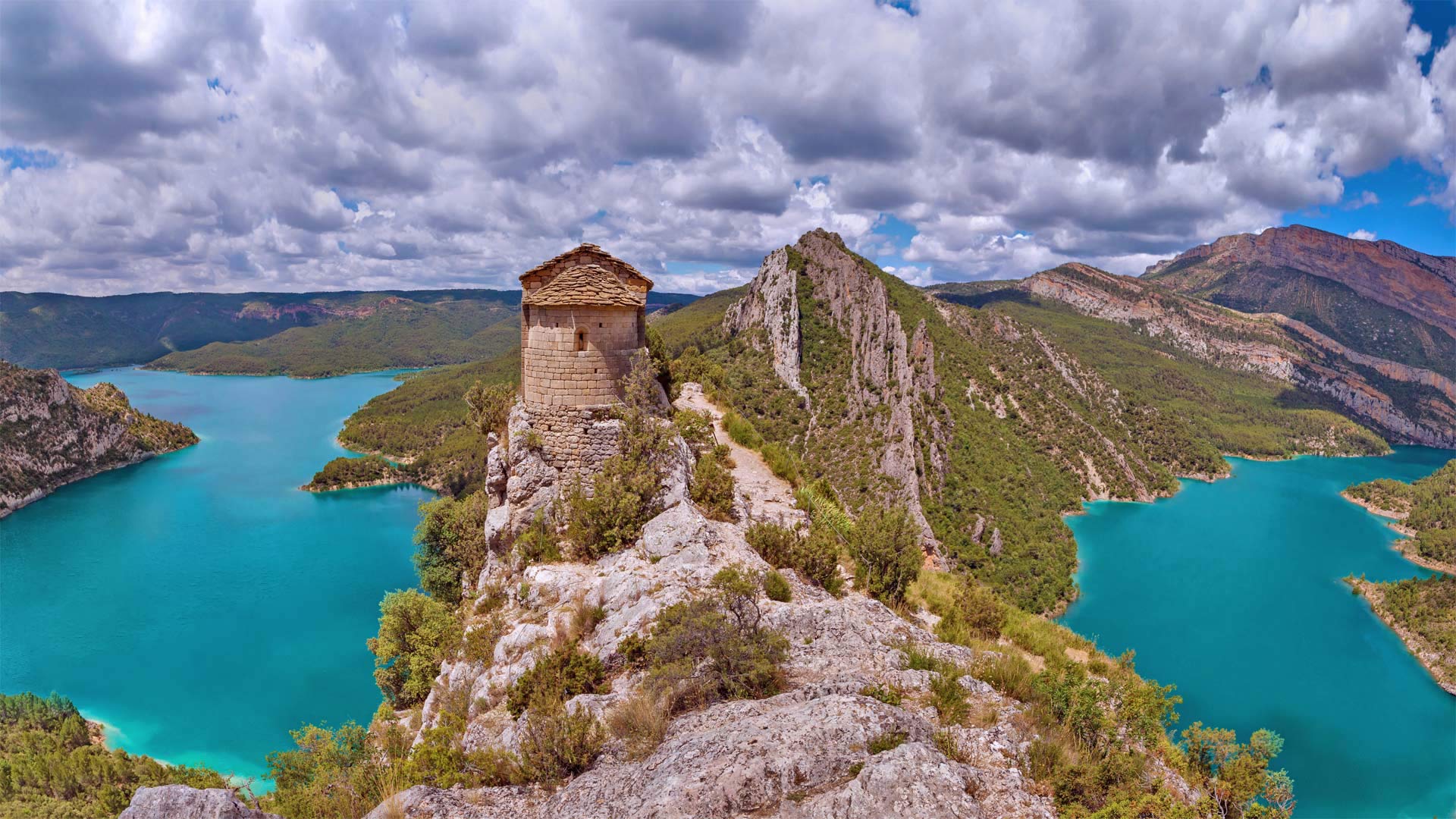
La Pertusa教堂,西班牙莱里达 Hermitage of La Pertusa, Lleida province, Spain (© bbsferrari/Getty Images)
A hermitage with a view
If this vivid landscape has you feeling pulled into the photo, take a deep breath before you look right or left. Or maybe just fix your gaze on the medieval brick ruin ahead—the Hermitage of La Pertusa in northern Catalonia, Spain. Glance sideways and you'll be greeted by sheer vertical drops to the basin of the Canelles Reservoir, across which lies the region of Aragon—historically a powerful kingdom that ruled Catalonia and much of the Mediterranean.
An actual visit to this spot would require traversing a steep, rocky trail to the narrow outcrop that hosts the hermitage, once the chapel of a long-collapsed Romanesque castle. But imagine the reward: a vista of the beauty Catalonia offers beyond busy Barcelona.
锡安国家公园中的Walter's Wiggles小径,犹他州 Walter's Wiggles trail in Zion National Park, Utah (© Dennis Frates/Alamy)
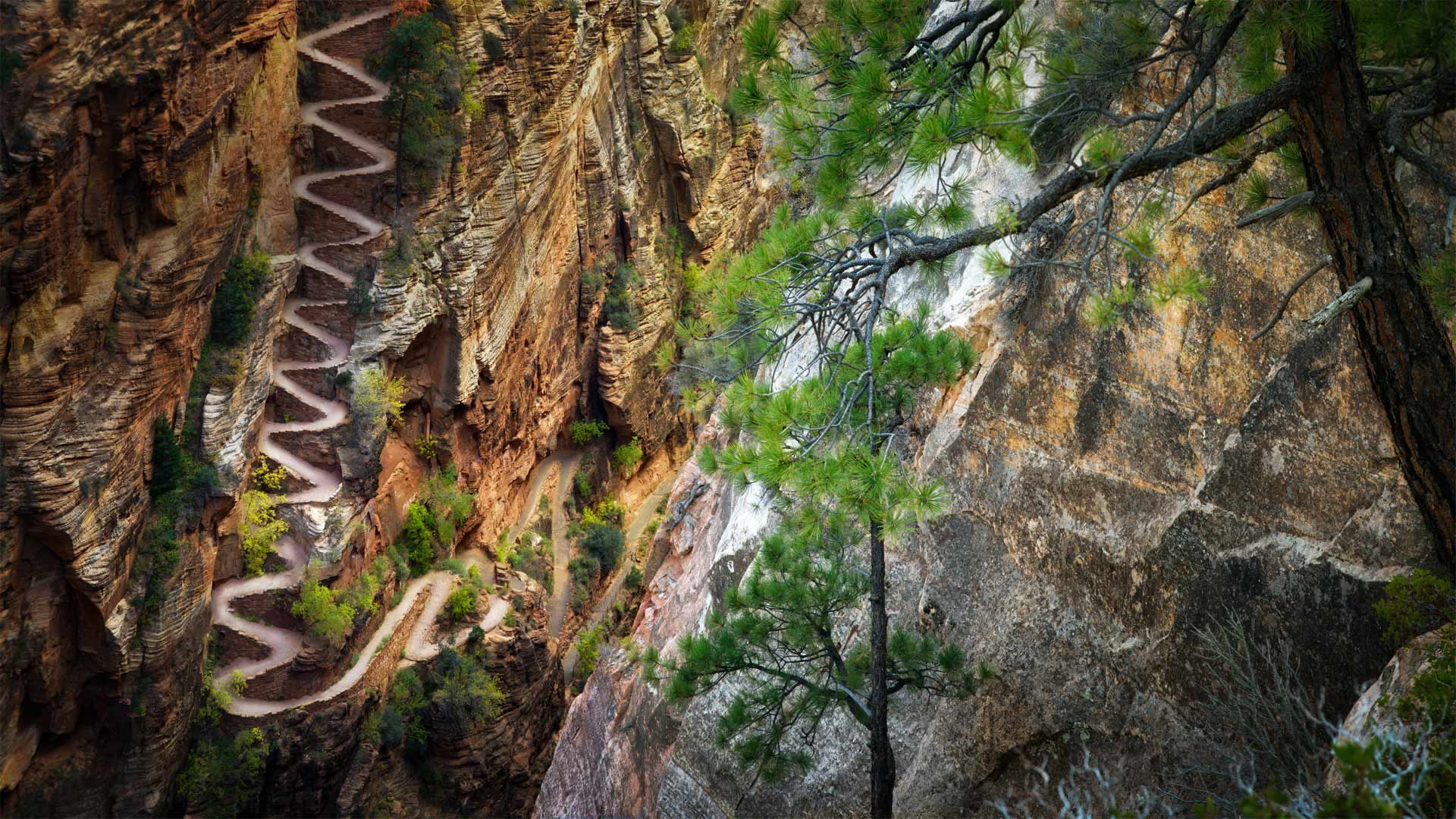
锡安国家公园中的Walter's Wiggles小径,犹他州 Walter's Wiggles trail in Zion National Park, Utah (© Dennis Frates/Alamy)
The long and wiggling path
In 1926, Walter Ruesch, the first superintendent of Zion National Park oversaw the construction of one of the park's most ambitious trails. It took 258 helicopter flights to haul in the concrete needed to construct the steep 21-switchback trail out of Refrigerator Canyon up to Angels Landing, but the view from the top makes it all worthwhile. Walter's Wiggles, one of the most difficult and dangerous trails in the park, was added to the National Registry of Historic Places in 1987.
But you don't need to haul tons of concrete or carve into the sheer sides of a remote canyon help carry on the tradition of trail-building. Today is National Trails Day, a day 'to come together in partnership to advocate for, maintain, and clean up public lands and trails.'
Usually this means heading out to a local wilderness area and joining others to clear or maintain some trails, but this year (as you may have noticed) is a little different. The American Hiking Society has organized a digital campaign to inspire individuals to unite for the protection of trails and access to public lands—without endangering one another.
同步发光萤火虫照亮了大烟山国家公园中的森林 Synchronous fireflies illuminate the forests of Great Smoky Mountains National Park, Tennessee (© Floris van Breugel/Minden Pictures)
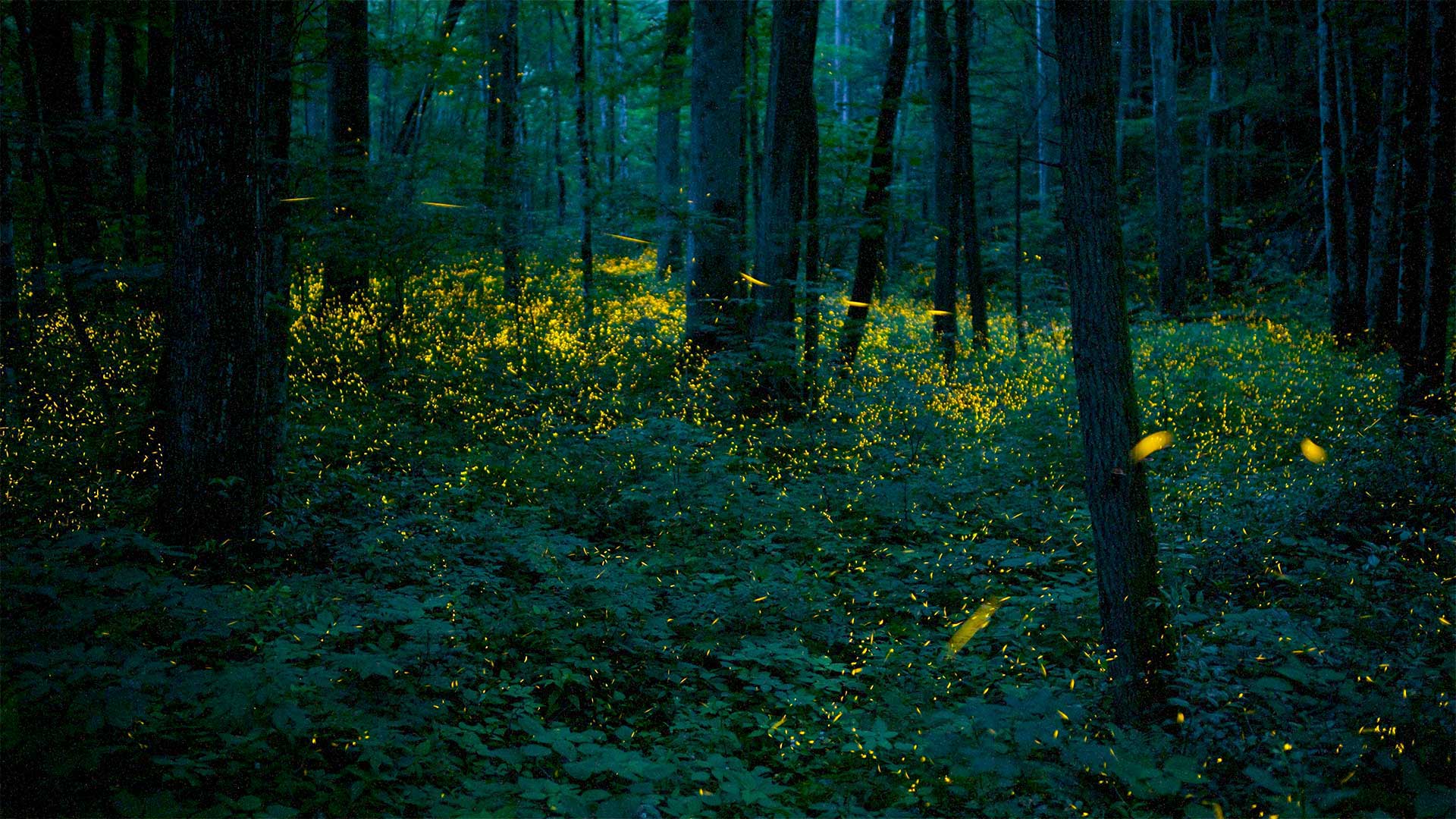
同步发光萤火虫照亮了大烟山国家公园中的森林 Synchronous fireflies illuminate the forests of Great Smoky Mountains National Park, Tennessee (© Floris van Breugel/Minden Pictures)
By the light of the fireflies
Every year between late May and mid-June, synchronous fireflies gather into a sparkling, rhythmic lightshow in the forests of Great Smoky Mountains National Park. As part of their 2-week mating display, the female lighting bugs synchronize their flashes with nearby males so that every few seconds waves of light ripple through the woods. While Photinus carolinus is only one of at least 19 species of fireflies that live in Great Smoky Mountains National Park, synchronous fireflies can be found in a few other places on Earth as well, particularly in Southeast Asia.
Each species of firefly has a characteristic flash pattern that helps the males and females recognize each other. In most species, like this one, the males fly and flash, while the females generally stay still and respond with a flash of their own. It's not clear why some species of fireflies flash synchronously, although some hypotheses involve diet, social interaction, and altitude. No matter why they do it, the flashing of lightning bugs is a magical sight to see—and we can all use a little magic sometimes.
兰鲁斯特一座名为Pont Fawr的石拱桥,英国威尔士 Pont Fawr, a stone arch bridge in Llanrwst, Wales, UK (© Pajor Pawel/Shutterstock)
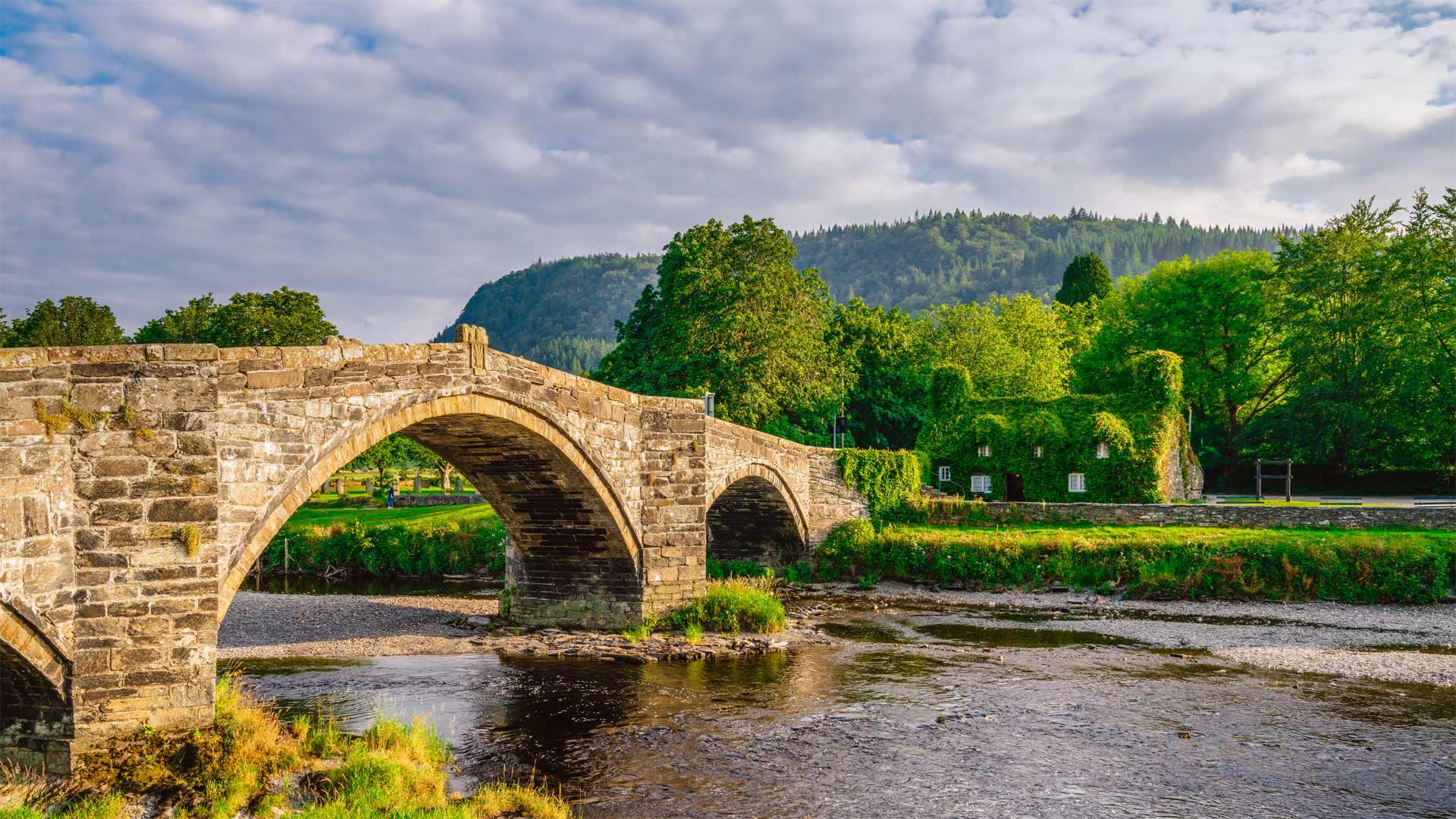
兰鲁斯特一座名为Pont Fawr的石拱桥,英国威尔士 Pont Fawr, a stone arch bridge in Llanrwst, Wales, UK (© Pajor Pawel/Shutterstock)
A bridge too Fawr
How much quaintness can be crammed into one picture? We're pushing the limits with this verdant summer scene in North Wales, looking across the Conwy River from its east bank in the town of Llanrwst. Past the Pont Fawr (Big Bridge) in the foreground, the shrubbery-shrouded cottage dubbed Tu Hwnt I'r Bont (Beyond the Bridge) seems to sprout straight from the grass. Built in the 15th century as a farmhouse, it's now a traditional Welsh tearoom serving up scones to locals as well as visitors bound for nearby Snowdonia National Park.
The Pont Fawr is itself the stuff of history: Built in the 1630s, it's often called the 'Inigo Jones bridge' after the pioneering early modern architect who, legend has it, designed the triple-arch span that today carries motor traffic. A one-way bottleneck along an otherwise two-way main road, the bridge's humped shape tends to obscure oncoming cars, earning it yet another local nickname: Pont y Rhegi (Bridge of Swearing).
两名山地车骑手在白缘公路上沿着谢福小道的转弯处骑行 ,犹他州峡谷地国家公园 (© Grant Ordelheide/Tandem Stills + Motion)
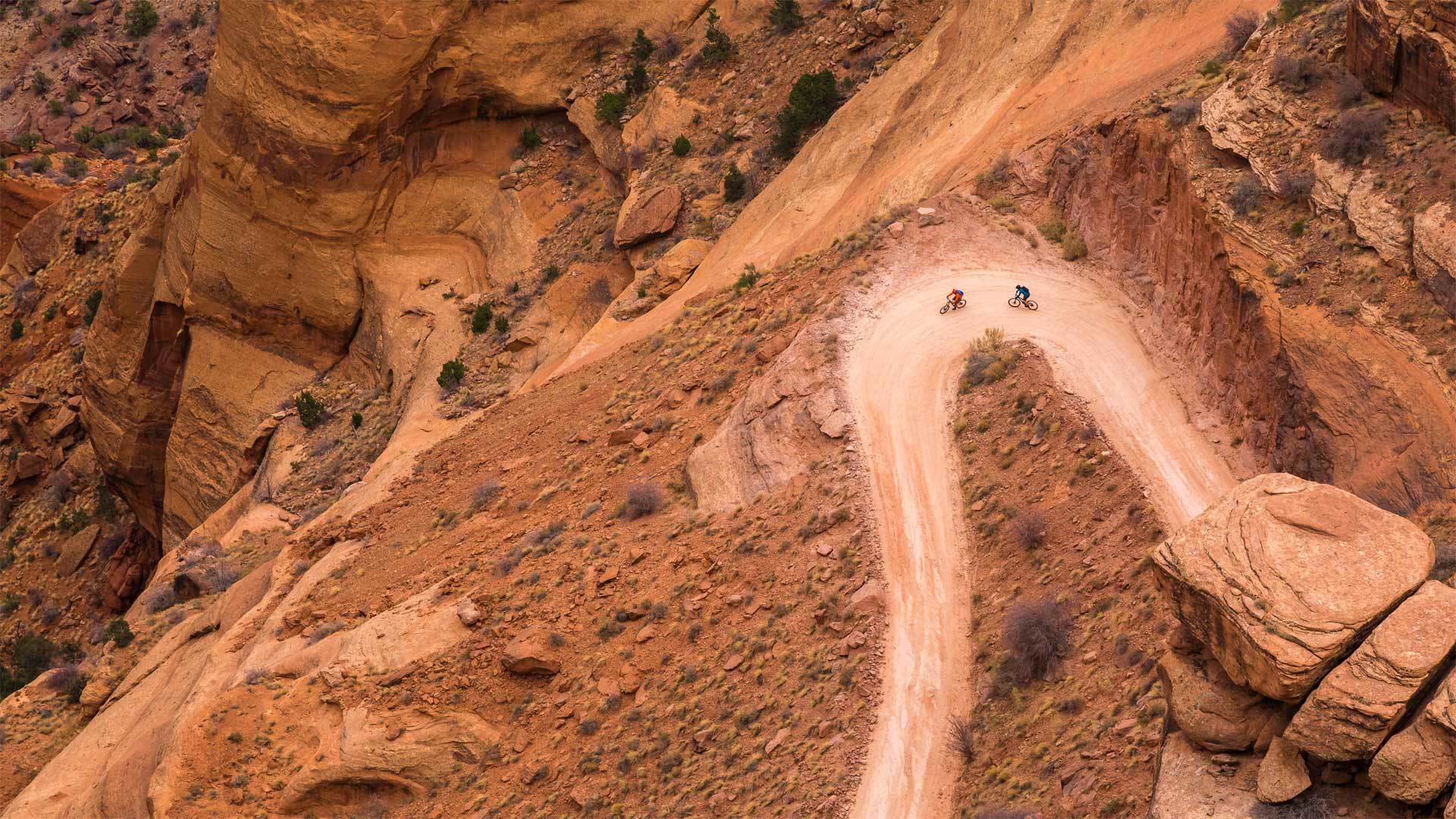
两名山地车骑手在白缘公路上沿着谢福小道的转弯处骑行 ,犹他州峡谷地国家公园 Two mountain bike riders make their way down the Shafer Trail switchbacks on White Rim Road in Canyonlands National Park, Utah (© Grant Ordelheide/Tandem Stills + Motion)
For the love of bikes
In honor of World Bicycle Day, we share a bird’s-eye view of two mountain bikers traveling on the Shafer Trail switchbacks of White Rim Road in Canyonlands National Park in Utah. In 2018, the UN officially recognized 'the uniqueness, longevity and versatility of the Bicycle, which has been in use for two centuries, and that it is a simple, affordable, reliable, clean and environmentally fit sustainable means of transportation.'
German Karl von Drais is credited with creating the first version of a bike in 1817; it was a heavy wooden contraption that the rider pushed forward with his or her feet. It had many names—the 'draisine,' velocipede, and dandy horse--and it was a fad for a few years, but eventually the bike was banned because it was too dangerous (no brakes!).
The bicycle has gone through many iterations since then, from the less-than-comfortable 'boneshaker' in the 1860s, followed by the 'penny-farthing' with its huge front wheel, to today’s popular fatbikes and e-bikes. During one of America’s biking booms, in the 1970s, more bikes were sold than cars. Today bicycles remain as popular as ever, so whether it’s for recreation or transportation, the bicycle is here to stay.
辛华达瀑布,加拿大贾斯珀国家公园 Sunwapta Falls in Jasper National Park, Alberta, Canada (© Schroptschop/Getty Images)
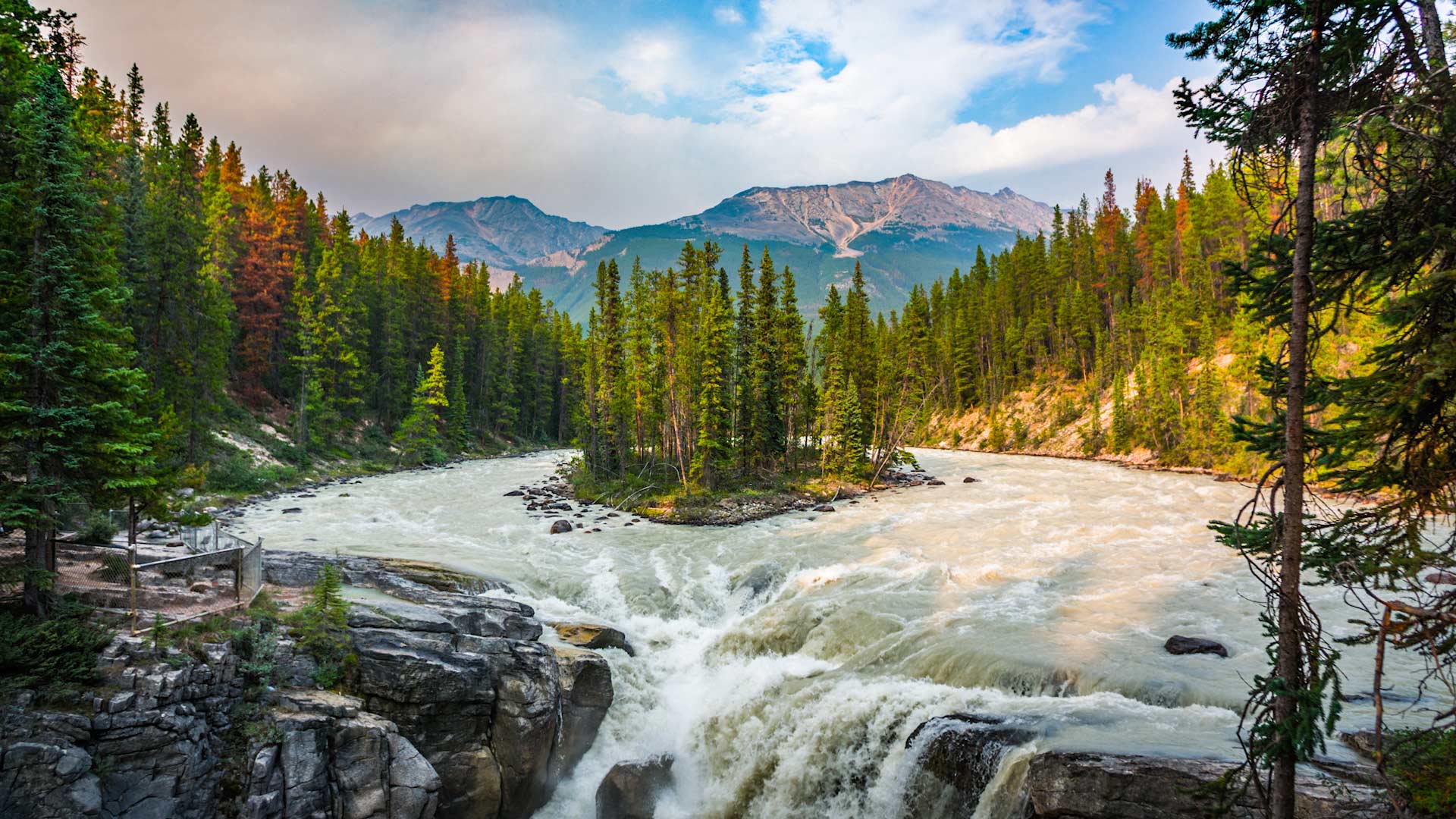
辛华达瀑布,加拿大贾斯珀国家公园 Sunwapta Falls in Jasper National Park, Alberta, Canada (© Schroptschop/Getty Images)
Falling for the Canadian Rockies
Sunwapta Falls is one of several waterfalls in Jasper National Park in Alberta, Canada, formed by hanging valleys. These valleys were created 8,000 years ago when glacier ice receded. Sunwapta Falls is actually a pair of waterfalls, a lower and upper one. Their water comes from the Athabasca Glacier, so volumes are higher in the summer due to seasonal glacial melting. Jasper National Park is the largest national park in the Canadian Rockies, with more than 4,000 square miles for camping, hiking, water sports, and other activities. Wildlife in the park includes elk, grizzly bears, moose, bighorn sheep, and caribou.
大堡礁,澳大利亚昆士兰 Great Barrier Reef, Queensland, Australia (© AWL Images/Danita Delimont)
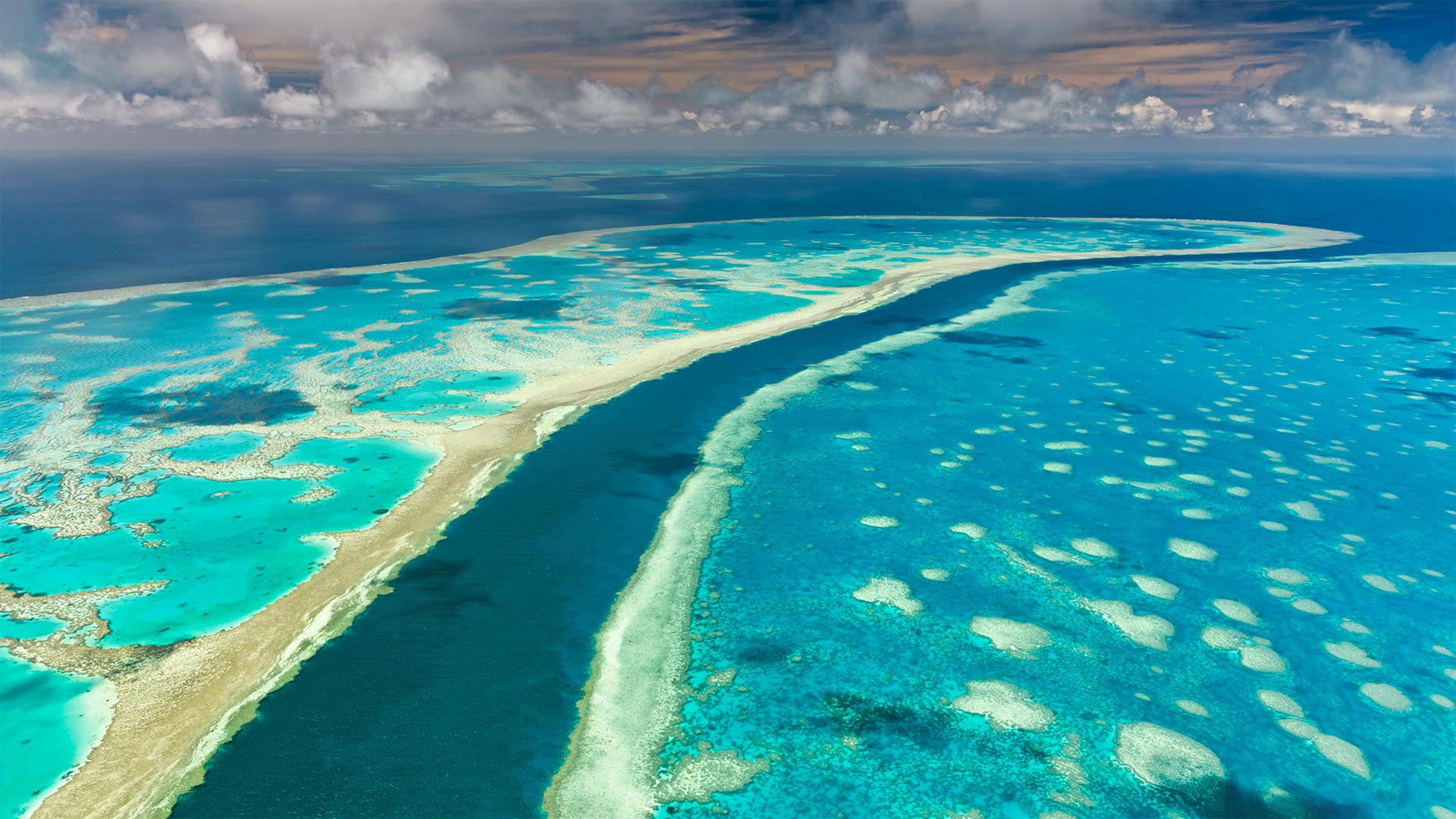
大堡礁,澳大利亚昆士兰 Great Barrier Reef, Queensland, Australia (© AWL Images/Danita Delimont)
The largest living organism on Earth
Today marks the second ever World Reef Day, an observance created to help focus global attention on the deteriorating health of on our planet's vital reef systems, and also to help marshal efforts to help them recover. Why should you care about the health of ecosystems such as the Great Barrier Reef, seen in this photo? Because reefs are an easy indicator of how healthy our oceans are. And right now, reefs aren’t doing too well. What can you do? Learn about reefs—not just the dangers that put healthy reefs at risk, but why reefs are such a critical part of Earth's greater ecosystems.
圣克鲁斯河,阿根廷巴塔哥尼亚 Santa Cruz River, Patagonia, Argentina (© Coolbiere Photograph/Getty Images)
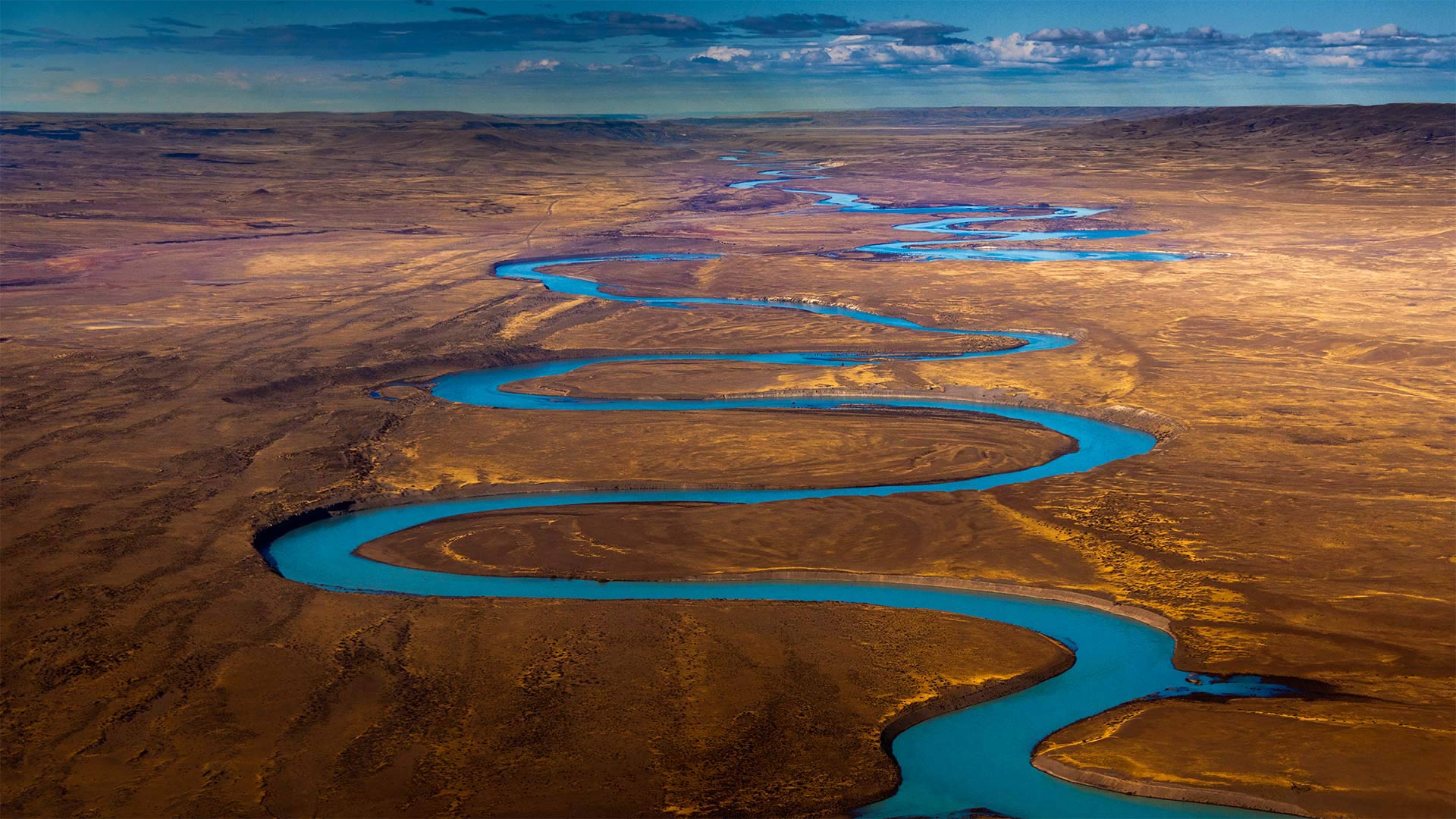
圣克鲁斯河,阿根廷巴塔哥尼亚 Santa Cruz River, Patagonia, Argentina (© Coolbiere Photograph/Getty Images)
Meandering through Patagonia
Squiggling east from the Andes mountains to the Atlantic Ocean, the mighty Santa Cruz river in Argentina's Patagonia region flows over some of South America's sparsest terrain. Over the centuries, some of history's most notable explorers have been drawn to the winding waterway: Ferdinand Magellan's 1520 expedition discovered its coastal delta, and Charles Darwin (on the same voyage that took him to the Galápagos Islands) studied the area's ecosystem during a grueling 1834 side-trip up the river. Even now, very few settlements exist along the 240-mile course of the Santa Cruz, considered the last major free-flowing river in Patagonia.
The river's many U-shaped bends, called meanders, are carved out gradually: When flow pressure isn't equal on both banks of a river, erosion tends to warp small bends into dramatic, sweeping curves over long periods of time. But the prospect of much swifter change looms over the Santa Cruz: A controversial hydroelectric dam project already underway downstream will potentially have a drastic impact on the entire river's hydrology and ecosystem.
百慕大马利海滩鸟瞰图 Aerial view of Marley Beach, Bermuda (© Paul Zizka/plainpicture)
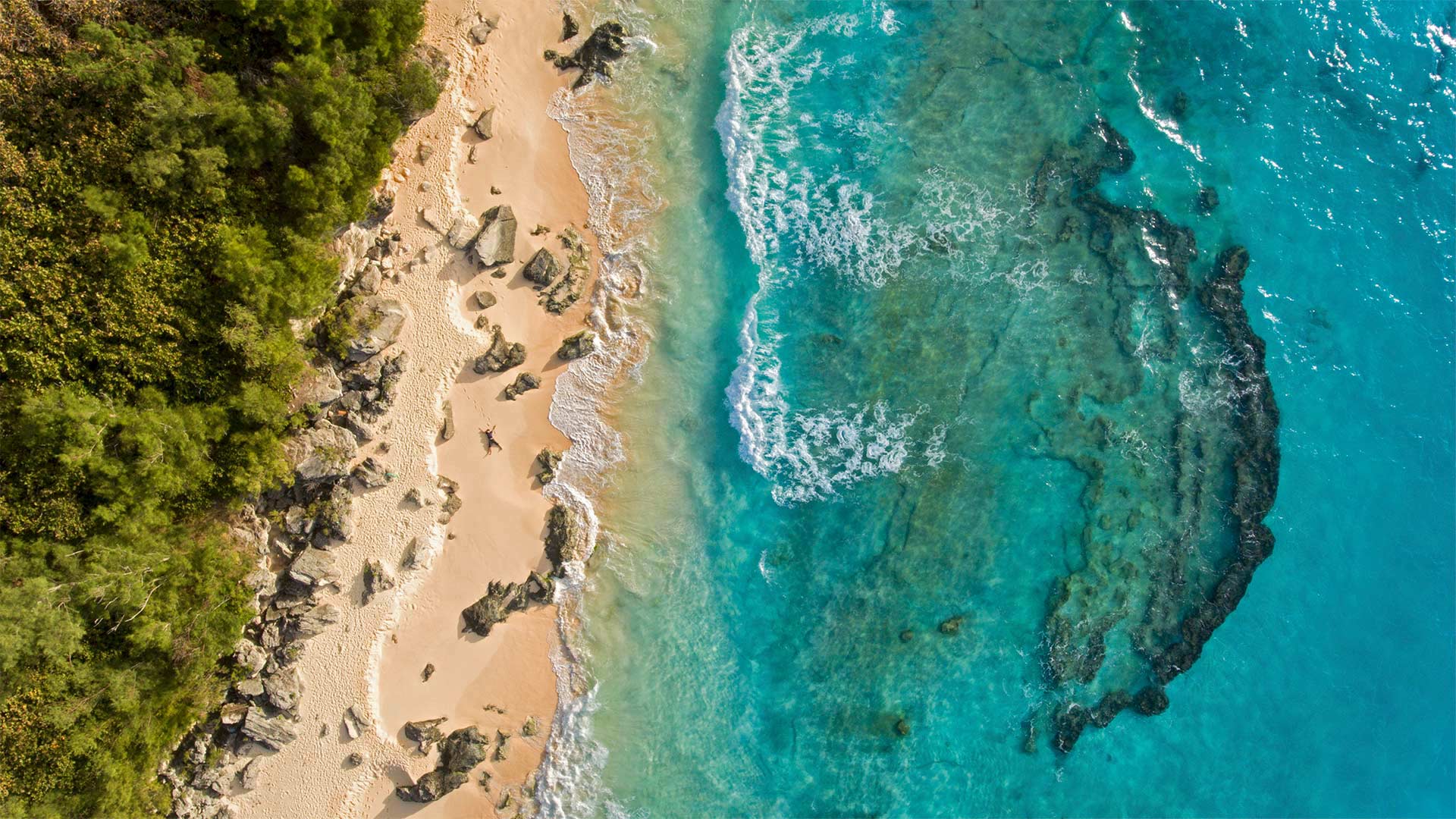
百慕大马利海滩鸟瞰图 Aerial view of Marley Beach, Bermuda (© Paul Zizka/plainpicture)
It's Bermuda's big day
We're gazing down at Marley Beach on the southwest coast of Bermuda in honor of Bermuda Day, a public holiday celebrated near the end of May. The event was first established on this British island territory in 1902, to honor the late Queen Victoria's birthday, but it has evolved into a celebration of the culture. Since 2018, it's been observed on the last Friday of May. Locals celebrate the end of winter on this day with a swim or boat ride. Today's holiday also marks the date when islanders transition to a summer wardrobe at work. For the next several months, Bermuda shorts, which hit just above the knee, will be considered appropriate business attire for the island's most dapper gentlemen.
大沼泽地国家公园鸟瞰图 Aerial view of Everglades National Park, Florida (© Tetra Images/Getty Images)
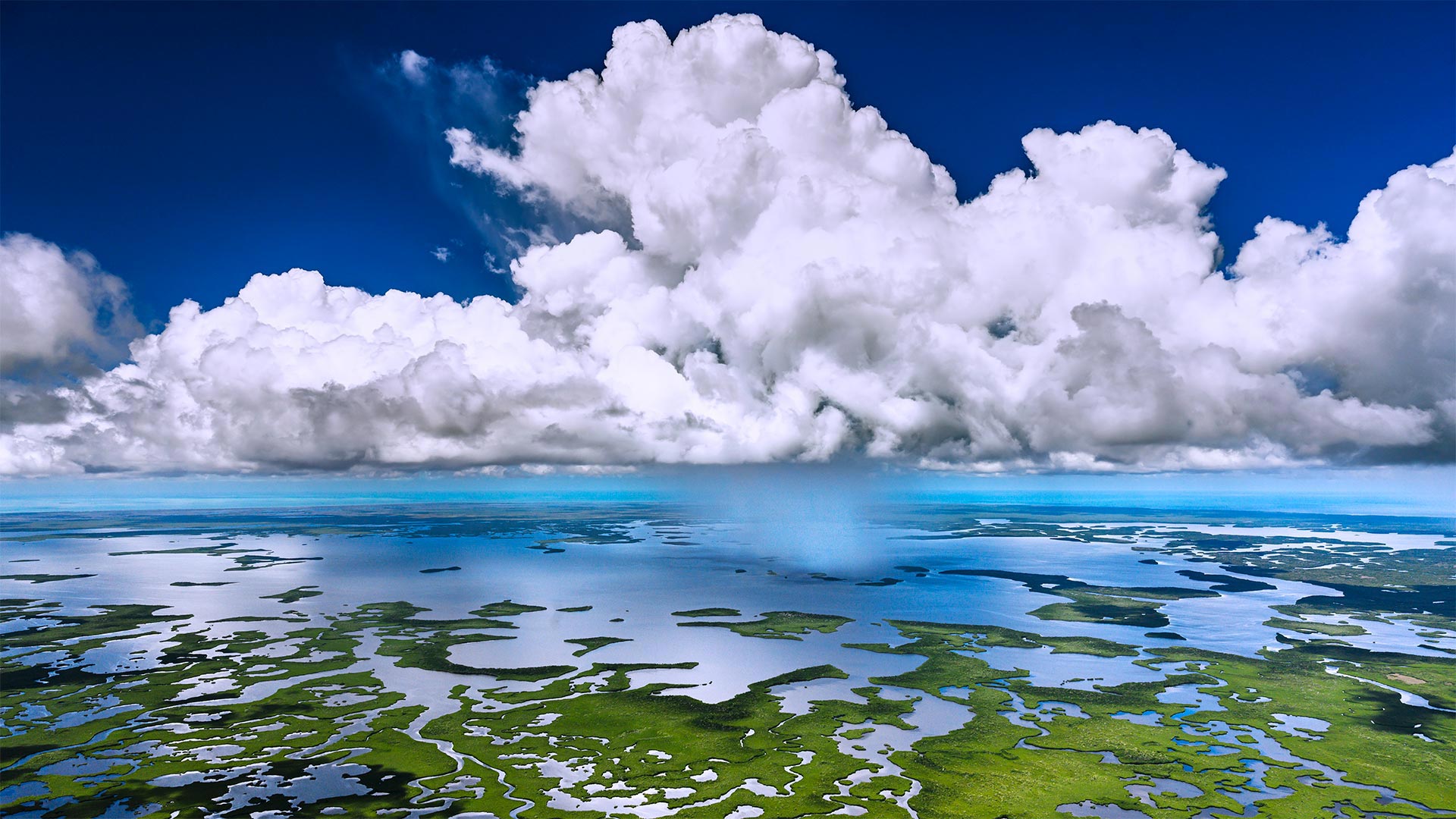
大沼泽地国家公园鸟瞰图 Aerial view of Everglades National Park, Florida (© Tetra Images/Getty Images)
Clouds over the 'River of Grass'
It's the beginning of the wet season in the Everglades, where it's typically hot and humid from May through November. Afternoon thunderstorms are common, bringing heavy rainfalls that subside quickly. The largest subtropical wilderness in the US, the Florida Everglades is essentially a slow-moving river, 60 miles wide and over 100 miles long. The water flows during the wet season from Lake Okeechobee southward across a limestone shelf to the southern tip of the Florida Peninsula. The complex ecosystem here is not found anywhere else on the planet.
Nicknamed the 'River of Grass' by conservationist Marjory Stoneman Douglas, the Everglades are full of sawgrass marshes, cypress swamps, and mangrove forests. In the early 20th century, water flow from Lake Okeechobee was increasingly diverted to support the development of South Florida, and it became clear that the Everglades were quickly vanishing. To help protect the fragile ecosystem, Everglades National Park was established in 1934, preserving about 20 percent of the original wetlands. While rising water levels can make it challenging to spot wildlife during the wet season, it's a critical season for the birds, crocodiles, manatees, and many more beautiful creatures that call the 'River of Grass' home.